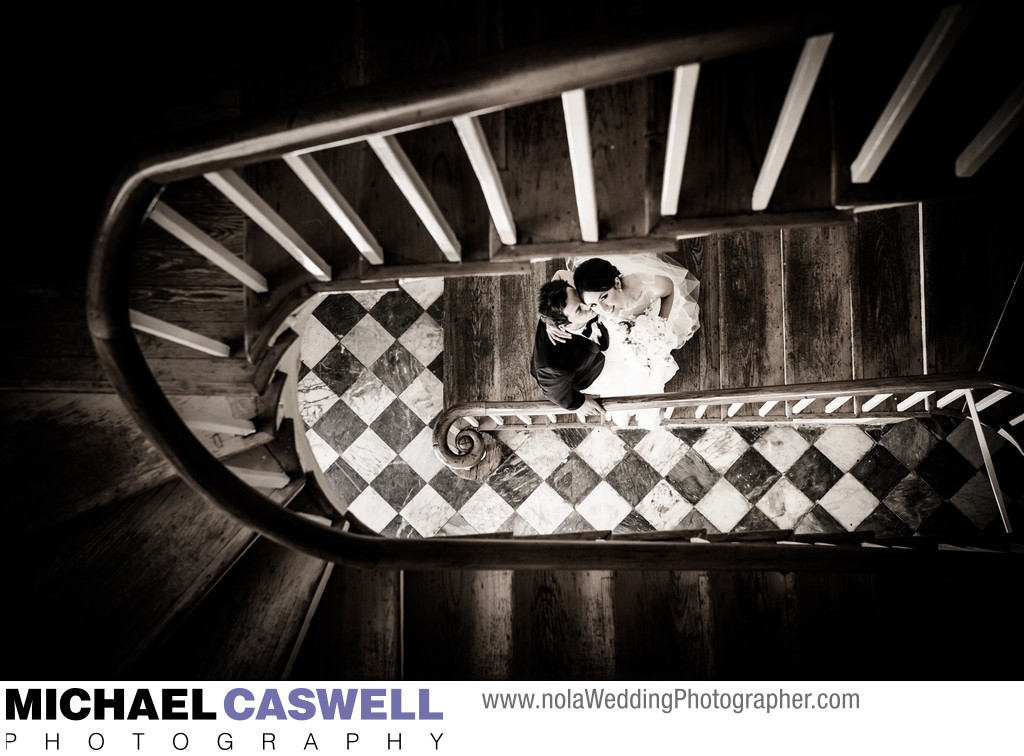
Although the best light for these shots outside will about a half hour before sunset, interesting and dramatic portraits can be captured at night as well. Regardless, if these kinds of photographs are important to you, make sure to allow time for this session in your wedding day schedule, giving consideration to whether you want daylight or night time shots and planning appropriately. If you are having an evening wedding but have your heart set on natural light bride and groom portraits outside, having a first look and doing these pictures before the ceremony is often the only solution.
I've had wedding marketing experts suggest that I not feature this image so prominently, as it's a rather unconventional shot that is perhaps not instantly identifiable at first glance as being a photograph of a bride and groom, but rather is more of a graphical composition. But I think they have been proven wrong by the numerous couples who have specifically gone out of their way to comment favorably about this image.
A calligraphed poster inside the venue shares some details about the building and its architect:
Benjamin Henry Boneval Latrobe (May 1, 1764 - September 3, 1820) was a British-born American architect best known for his design of the United States Capitol. Also known as the “Father of American Architecture” other notable projects include the White House Porticos, the first Catholic Cathedral built in the United States, the Baltimore Basilica, The Bank of Philadelphia, the Waterworks Systems for both Philadelphia and New Orleans, as well as the central column of The St. Louis Cathedral in New Orleans.
The Louisiana State Bank was the first bank chartered in Louisiana after reconstruction. The architectural plans were completed on August 10, 1820 and the construction completed in 1822. The Louisiana State Bank retained ownership of the structure until it lost its charter in 1870.
Latrobe’s on Royal was Benjamin Henry Latrobe’s final design. Yellow fever, a wide-spread disease prevalent in New Orleans in the nineteenth century took Latrobe on September 3, 1820 before he could witness his last design achievement come to life in 1822, as the Louisiana State Bank. Benjamin Henry Latrobe was buried in New Orleans where his son Henry was buried three years earlier after also dying from yellow fever.
Location: 403 Royal St, New Orleans, LA 70130.